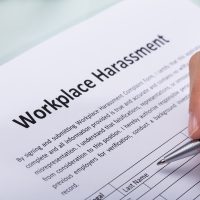How to Prevent Workplace Discrimination in California

As an employee in California, you have the right to be free from unlawful discrimination. Your employer has a legal obligation to treat you the same as other similarly situated employees, regardless of your gender, race, religion, sexual orientation, age, pregnancy, or other protected characteristics. Employers that lack appropriate policies and procedures designed to prevent discrimination can and should be held liable for any discriminatory conduct that inevitably occurs. An ounce of prevention is worth a pound of cure. Below, we discuss several important preventative measures that your employer should be taking to mitigate the risk of workplace discrimination. If you or someone you know has been discriminated against at work, call a dedicated Riverside workplace discrimination lawyer for advice on what to do next.
Maintain Clear, Written Anti-Discrimination Policies
The first step toward creating a workplace free from discrimination is to draft and maintain clear policies regarding harassment, discrimination, and other prohibited conduct in the workplace. These policies should clearly describe the company’s mission statement regarding discrimination as well as lay out the type of conduct that is prohibited. These policies must be disseminated to all employees and updated as needed to fit the law and the realities of the company.
The policies must be clear and consistently enforced. They must apply to everyone at the company, including managers, workers, and the executive suite alike. Employees must know that the company has a strong anti-discrimination stance, that the policy protects and applies to everyone at the company, and that no one should be afraid of coming forward to report any possible discrimination or harassment.
Conduct Anti-Discrimination and Anti-Harassment Training
All employees at the company should have a clear understanding of the anti-discrimination policies as well as state and federal labor laws. The employer should conduct regular training in order to ensure employees know how to identify discrimination or harassment and know what to do should they endure or witness such inappropriate conduct. It may be valuable to hold separate training sessions for supervisors and managers to discuss how to communicate effectively with workers, how to properly respond to complaints, and how to identify and deal with issues that may arise.
Maintain a Safe Channel for Workplace Complaints and Concerns
Employees who have concerns regarding discrimination, harassment, or other workplace concerns should have a way to report those concerns. Many employers encourage employees to speak with Human Resources or another department dedicated to handling workplace complaints. We’d encourage employers to take it a step further and maintain an anonymous tip line; many workers who experience discrimination or harassment are concerned that reporting such conduct can lead to backlash and retaliation.
When you start a new job, read up on your employer’s policies. Familiarize yourself with their complaint process, whether it allows for anonymous reporting, reporting to HR, or instead requires complaining directly to supervisors and other higher-ups. If there’s no clear policy for how you can report your concerns, your employer may be turning a blind eye to discrimination and other unlawful conduct.
Respond Appropriately to Complaints or Allegations
If your employer learns of alleged discrimination by way of a complaint to HR, an anonymous tip line, or a supervisory employee, the company must respond appropriately. The employer must conduct a reasonable investigation into the allegations and remedy the situation. If the allegations bear out, the perpetrator of the discrimination must be reprimanded appropriately, including by termination where appropriate. If the employer discovers discrimination at a more systematic level, more serious and all-encompassing actions must be taken.
Employers can mitigate the risks of discrimination by maintaining policies for investigating and responding to allegations of discrimination. It’s not enough to have a policy against discrimination; there must be a plan of action for protecting aggrieved employees and punishing wrongdoers. That plan must be followed in the event of workplace discrimination or harassment, and the anti-discrimination policies must be enforced consistently. If your employer has no organized method for handling complaints of discrimination beyond throwing up their hands and calling it “he-said, she-said,” they are actively facilitating discrimination and other unlawful conduct in the workplace.
Call a Dedicated Labor Law Attorney for Help With California Workplace Discrimination
For help protecting yourself and recovering compensation after experiencing discrimination or harassment in Southern California, call Ochoa & Calderón to discuss your case with a diligent and successful California labor and employment attorney. Call 951-901-4444 in Riverside or 844-401-0750 toll-free throughout Southern California.
